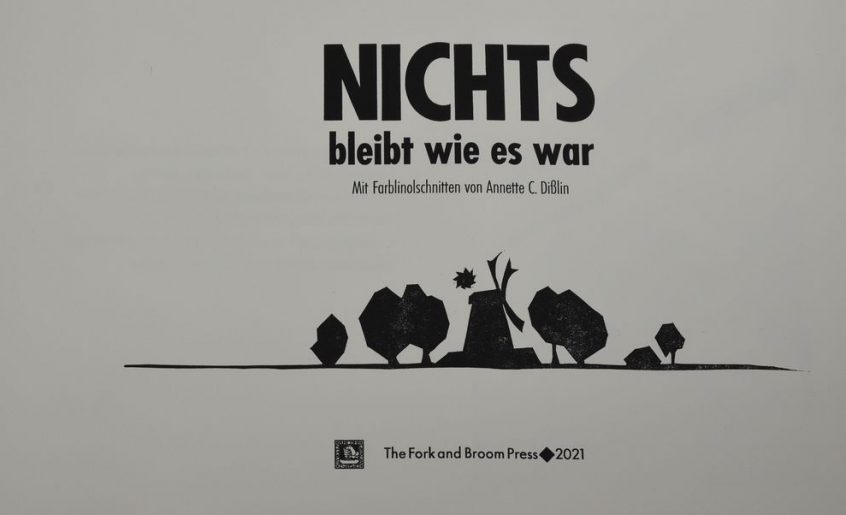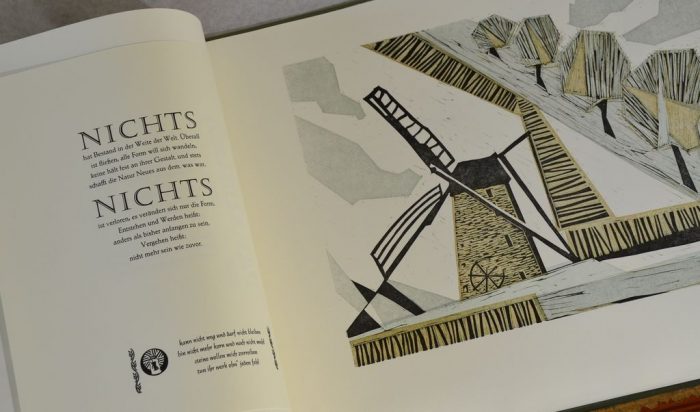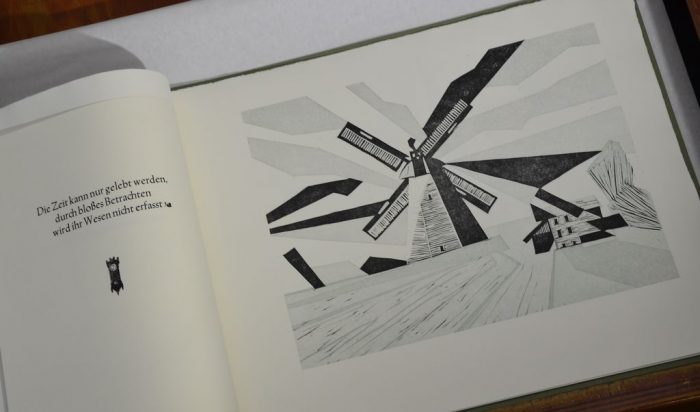The new book

Nichts bleibt wie es war (Nothing remains as it has been)
Artist‘s Book
Size: approx. 55x40cm
Paper: antique wove for the text, Hahnemühle printmaking board 150 gsm for illustrations
Text: handset from metal type
Printing: letterpress on manual cylinder proof press
Illustrations: 11 linocuts, printed from 1 to 4 blocks
Binding: Japanese style binding with inner and outer binding, book cloth
Edition: 3 signed and numbered copies for sale, 1 E.A. 1 display copy
Design, typography, printing, binding, texts (if not stated otherwise): Annette C. Disslin
The artist‘s book „nichts bleibt wie es war“ (nothing remains as it has been) is all about change – change that surrounds us and change within ourselves

The book takes inspiration from creation myths, fairy tales and stories about transformations, as well as from philosophical thought from Heraclitus to Henri Bergson and beyond. The design is inspired by the collage-like, faceted style of some cubist works and by the idea of our perceiving being selective. Mostly we are not aware that what we perceive or observe is not the whole big picture, but a selection of aspects that our senses choose as relevant and sufficient for now. If we want to see more we will need to make the effort of looking more closely. In doing so we might get a glance of the bigger picture and an understanding of the context. Heraclitus warned us that our senses might betray us, and what we percieve through our senses would have to be thought through properly, since only thought is able to understand the world.

Henri Bergson was convinced that time in every single moment leaves a mark in every living being and thus altering it indelibly. This and his understanding of time and duration are recurrent themes in the text passages of this book. Processes of transformation in myths and fairy tales often are a symbol for a person‘s maturing. As illustrations windmills were chosen for the simple reason that they are symbols of transformation: they are built to transform wind energy into mechanical power and then use this power to transform grain into flour, tree trunks into boards or seeds and nuts into oil.

